A beginner’s guide to ACID and database transactions
Copyright: This article is a copy of the article “A beginner’s guide to ACID and database transactions”, which was written and published by Vlad Mihalcea, on February 16, 2022, at the following URL of his website: https://vladmihalcea.com/a-beginners-guide-to-acid-and-database-transactions/
Transactions are omnipresent in today’s enterprise systems, providing data integrity even in highly concurrent environments. So let’s get started by first defining the term and the context where you might usually employ it.

Transaction
A transaction is a collection of read/write operations succeeding only if all contained operations succeed.
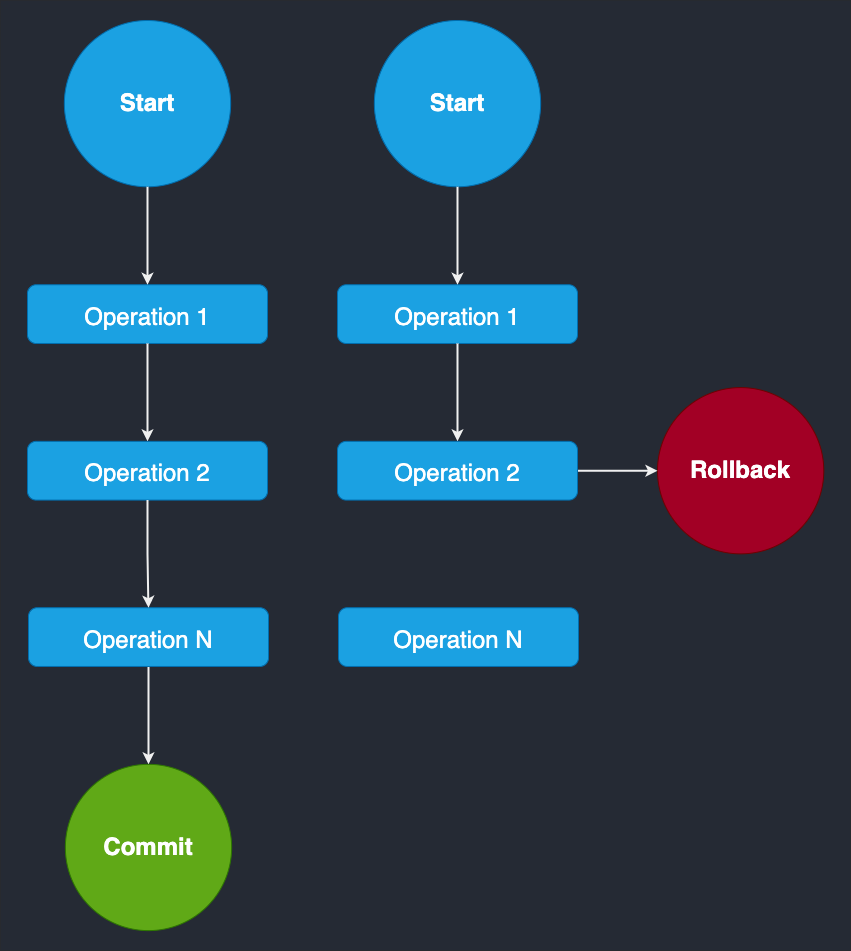
Inherently a transaction is characterized by four properties (commonly referred as ACID):
In a relational database, every SQL statement must execute in the scope of a transaction. Without defining the transaction boundaries explicitly, the database is going to use an implicit transaction which is wraps around every individual statement. The implicit transaction begins before the statement is executed and end (commit or rollback) after the statement is executed. The implicit transaction mode is commonly known as autocommit.
For an enterprise application, the auto-commit mode is something you’d generally want to avoid since it has serious performance penalties, and it doesn’t allow you to include multiple DML operations in a single atomic Unit of Work.
It’s very important to understand those, hence we will discuss each one of them as follows.
Atomicity
Atomicity takes individual operations and turns them into an all-or-nothing unit of work, succeeding if and only if all contained operations succeed.
A transaction might encapsulate a state change (unless it is a read-only one). A transaction must always leave the system in a consistent state, no matter how many concurrent transactions are interleaved at any given time.
Consistency
Consistency means that constraints are enforced for every committed transaction. That implies that all Keys, Data types, Checks and Trigger are successful and no constraint violation is triggered.
Isolation
Transactions require concurrency control mechanisms, and they guarantee correctness even when being interleaved. Isolation brings us the benefit of hiding uncommitted state changes from the outside world, as failing transactions shouldn’t ever corrupt the state of the system. Isolation is achieved through concurrency control using pessimistic or optimistic locking mechanisms.
Durability
A successful transaction must permanently change the state of a system, and before ending it, the state changes are recorded in a persisted transaction log. If our system is suddenly affected by a system crash or a power outage, then all unfinished committed transactions may be replayed.
For messaging systems like JMS, transactions are not mandatory. That’s why we have non-transacted acknowledgement modes.
File system operations are usually non-managed, but if your business requirements demand transaction file operations, you might make use a tool such as XADisk.
While messaging and file systems use transactions optionally, for database management systems transactions are compulsory.
Challanges
ACID is old school. Jim Gray described atomicity, consistency and durability long before I was even born. But that particular paper does not mention anything about isolation. This is understandable if we think of the production systems of the late ’70s, which according to Jim Gray:
“At present, the largest airlines and banks have about 10,000 terminals and about 100 active transactions at any instant”.
So all efforts were spent on delivering correctness rather than concurrency. Things have changed drastically ever since, and nowadays even modest set-ups are able to run 1000 TPS.
From a database perspective, the atomicity is a fixed property, but everything else may be traded off for performance/scalability reasons.
If the database system is composed of multiple nodes, then distributed system consistency (C in CAP Theorem not C in ACID) mandates that all changes be propagated to all nodes (multi-master replication). If replica nodes are updated asynchronously then we break the consistency rule, the system becoming “eventually consistent“.
Peter Bailis has a very good article explaining the difference between Consistency in CAP Theorem and Consistency in ACID.
A transaction is a data state transition, so the system must operate as if all transactions occur in a serial form even if those are concurrently executed. If there would be only one connection running at all times, then Serializability wouldn’t impose any concurrency control cost. In reality, all transactional systems must accommodate concurrent requests, hence serialization has its toll on scalability. The Amdahl’s law describes the relation between serial execution and concurrency:
“The speedup of a program using multiple processors in parallel computing is limited by the time needed for the sequential fraction of the program.”
As you’ll see later, most database management systems choose (by default) to relax correctness guarantees to achieve better concurrency.
Playing with durability makes sense for highly performing clustered databases if the enterprise system business requirements don’t mandate durable transactions. But, most often durability is better off untouched.
Isolation Levels
Although some database management systems offer MVCC, usually concurrency control is achieved through locking. But as we all know, locking increases the serializable portion of the executed code, affecting parallelization.
The SQL standard defines four Isolation levels:
- READ_UNCOMMITTED
- READ_COMMITTED
- REPEATABLE_READ
- SERIALIZABLE
All but the SERIALIZABLE level are subject to data anomalies (phenomena) that might occur according to the following pattern:
| ISOLATION LEVEL | DIRTY READ | NON-REPEATABLE READ | PHANTOM READ |
|---|---|---|---|
| READ_UNCOMMITTED | allowed | allowed | allowed |
| READ_COMMITTED | prevented | allowed | allowed |
| REPEATABLE_READ | prevented | prevented | allowed |
| SERIALIZABLE | prevented | prevented | prevented |
Phenomena
But what are all those phenomena we have just listed? Let’s discuss each and every one of them.
Dirty read
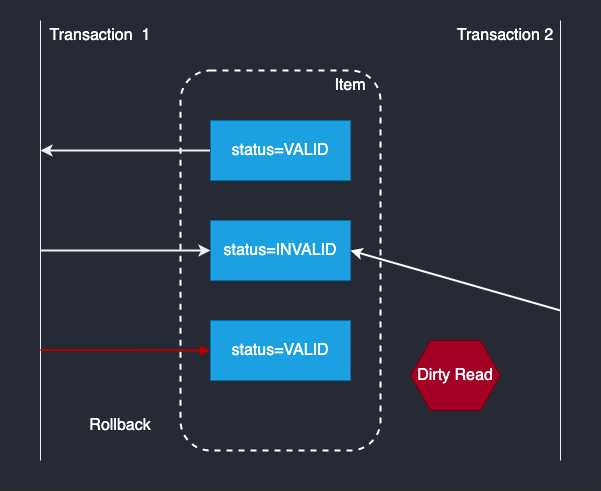
A dirty read happens when a transaction is allowed to read uncommitted changes of some other running transaction. This happens because there is no locking preventing it. In the picture above, you can see that the second transaction uses an inconsistent value as of the first transaction had rolled back.
For more about the Dirty Read anomaly, check out this article.
Non-repeatable read
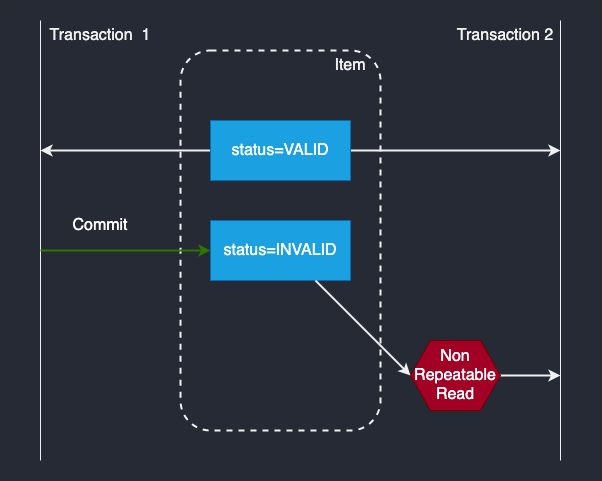
A non-repeatable read manifests when consecutive reads yield different results due to a concurring transaction that has just updated the record we’re reading. This is undesirable since we end up using stale data. This is prevented by holding a shared lock (read lock) on the read record for the whole duration of the current transaction.
For more about the Non-Repeatable Read anomaly, check out this article.
Phantom read
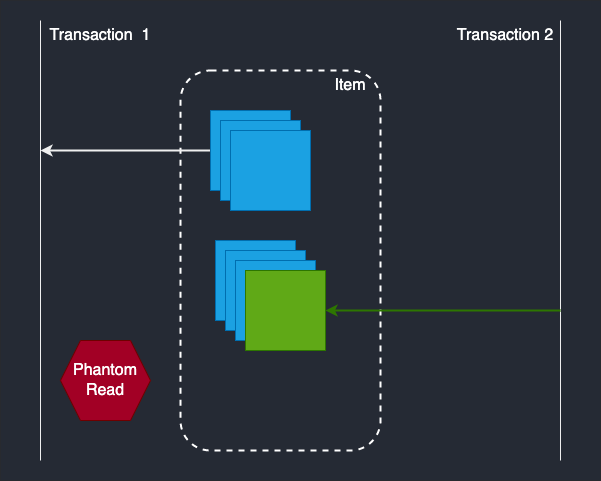
A phantom read happens when a subsequent transaction inserts a row that matches the filtering criteria of a previous query executed by a concurrent transaction. We, therefore, end up using stale data, which might affect our business operation. This is prevented using range locks or predicate locking.
For more about the Phantom Read anomaly, check out this article.
Even more phenomena
Even if not mentioned in the SQL Standard, there are even more phenomena that you should be aware of, like:
Knowing when these phenomena can occur can addressing them properly is what data integrity is all about.
Default Isolation Levels
Even if the SQL standard mandates the use of the SERIALIZABLE isolation level, most database management systems use a different default level.
| DATABASE | DEFAULT ISOLATION LEVEL |
|---|---|
| Oracle | READ_COMMITTED |
| MySQL | REPEATABLE_READ |
| Microsoft SQL Server | READ_COMMITTED |
| PostgreSQL | READ_COMMITTED |
| DB2 | CURSOR STABILITY |
ACID Transactions (Explained by Example)
Conclusion
Usually, READ COMMITED is the right choice, since not even SERIALIZABLE can protect you from a lost update where the reads/writes happen in different transactions (and web requests). You should take into consideration your enterprise system requirements and set up tests for deciding which isolation level best suits your needs.
References:
Original Article -> Vlad Mihalcea: A beginner’s guide to ACID and database transactions

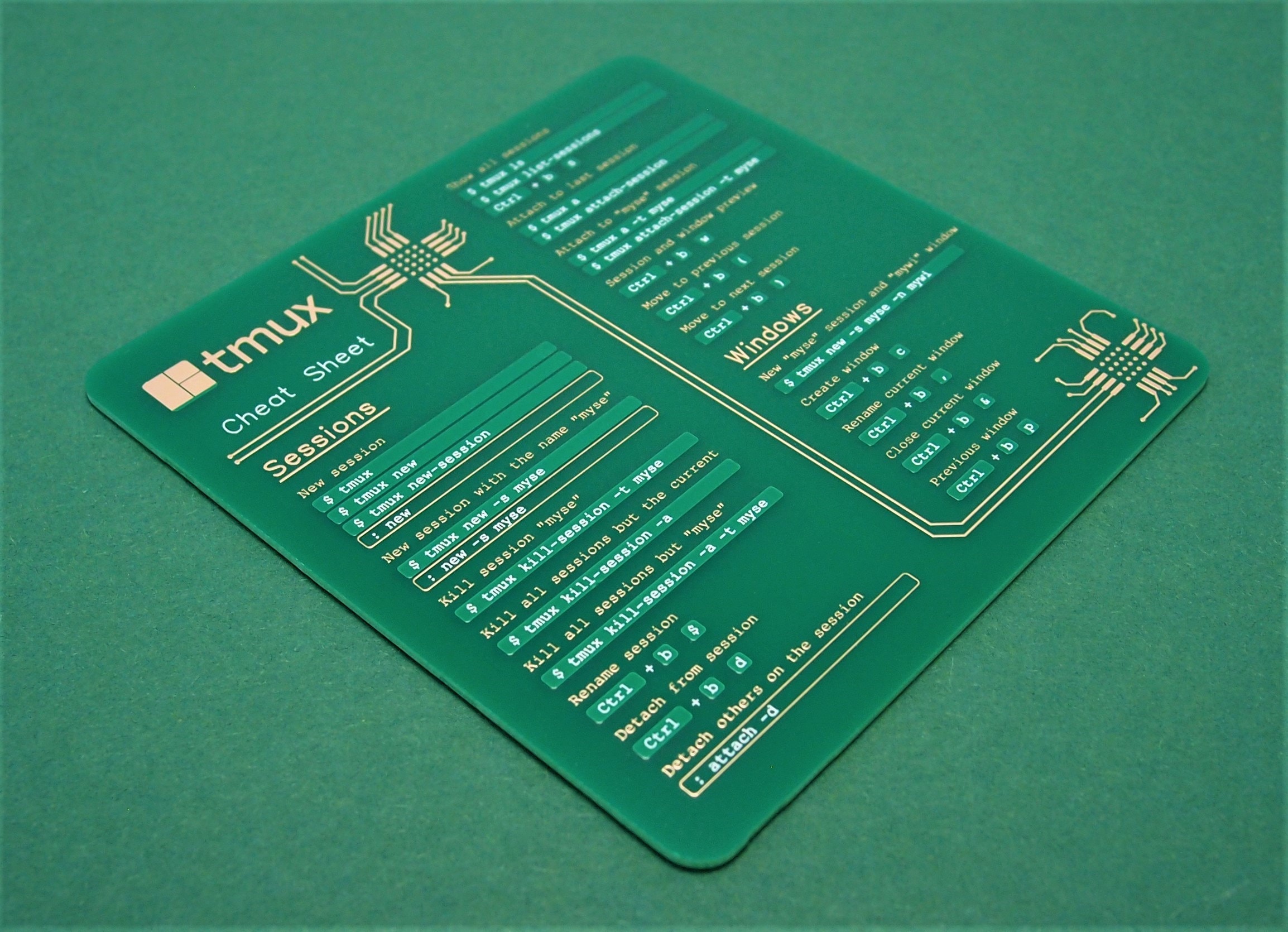



Leave a Comment
Your email address will not be published. Required fields are marked *